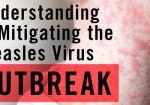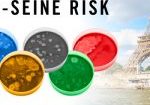
Rodney Madsen, CEO & Epidemiologist
Jul 15, 2024
Summer Sickness: Preventing the Flu and Staying Healthy

Last Updated:
Jul 15, 2024
When you think of summer, images of beaches, sunshine, and pool parties likely come to mind—not catching the flu. This pesky, contagious respiratory illness is typically associated with the cold-weather months of fall and winter. However, it is still possible to catch the flu in the summer, even though it is much less common.
Why is the Flu Less Common in the Summer?
Flu viruses (influenza A and influenza B) are more easily transmitted during the fall and winter, which is why this period is known as "flu season." During the rest of the year, flu viruses are still present but in much lower numbers. Several factors contribute to this seasonal pattern:
- Cold, Dry Weather: Flu viruses spread more easily in cold, dry conditions .
- Indoor Crowding: People spend more time indoors during colder months, increasing close contact and the likelihood of transmission.
- Immune Response: Cold temperatures can lower immune defenses in the nose, making it harder to fight off infections in winter compared to summer .
Preventing the Flu in the Summer
While flu is less likely to circulate in the summer, prevention remains essential. Here are effective ways to prevent the flu and stay healthy:
1. Maintain Good Personal Hygiene
- Hand Washing: Wash your hands regularly with soap and water for at least 20 seconds, especially before eating, after using the restroom, and after being in public places .
- Hand Sanitizer: Use an alcohol-based hand sanitizer when soap and water are not available .
- Avoid Touching Your Face: Avoid touching your eyes, nose, and mouth with unwashed hands, as these are common entry points for viruses .
2. Disinfect Homes and Workplaces
- Regular Cleaning: Clean and disinfect frequently-touched surfaces such as doorknobs, light switches, countertops, and phones. Use EPA-approved disinfectants known to be effective against flu viruses .
- Air Quality: Ensure good ventilation in your home and workplace. Consider using air purifiers to reduce airborne contaminants .
- Professional Disinfection Services: For comprehensive infection prevention, consider professional disinfection services. GermBlast offers specialized services to ensure a thorough and effective clean, reducing the risk of flu and other infections.
3. Get Vaccinated
- Annual Flu Shot: The flu vaccine is the most effective way to prevent the flu. It provides protection throughout the year, although its effectiveness may wane over time . Getting vaccinated each year helps maintain immunity against the latest flu strains.
4. Practice Social Distancing and Healthy Habits
- Avoid Close Contact: Stay away from individuals who are sick, and if you are feeling unwell, avoid close contact with others to prevent spreading the virus .
- Healthy Lifestyle: Maintain a healthy diet, stay hydrated, exercise regularly, and get enough sleep. These habits help keep your immune system strong and better equipped to fight off infections .
5. Stay Informed and Prepared
- Stay Informed: Keep up-to-date with local health advisories and flu trends. Understanding when and where flu outbreaks are happening can help you take extra precautions .
- Early Testing and Treatment: If you experience flu-like symptoms, get tested early, especially if you are at higher risk for complications. Early treatment with antiviral medications can lessen the severity and duration of the flu .
The Bottom Line
Even though flu viruses are much less likely to circulate in the summer months, it’s still possible to get sick with the flu. By maintaining good personal hygiene, regularly disinfecting your environment, getting vaccinated, practicing social distancing, and staying informed, you can significantly reduce your risk of catching the flu and other flu-like illnesses.
Preventive measures are crucial not just during flu season but year-round. At GermBlast, we are committed to helping you create healthier environments through our comprehensive infection prevention solutions.
References:
- Centers for Disease Control and Prevention. (2022). Flu Symptoms & Complications.
- Centers for Disease Control and Prevention. (2022). HPIV Seasons.
- Centers for Disease Control and Prevention. (2022). People at Higher Risk of Flu Complications.
- Ferdinands, J. M., et al. (2021). Waning Vaccine Effectiveness Against Influenza-Associated Hospitalizationsamong Adults, 2015–2016 to 2018–2019, United States. Clinical Infectious Diseases.
- Huang, D., et al. (2023). Cold Exposure Impairs Nasal Antiviral Immunity. The Journal of Allergy and Clinical Immunology.
- Lowen, A. C., et al. (2014). Roles of Humidity and Temperature in Shaping Influenza Seasonality. Journal of Virology.
- Sinclair, W., et al. (2022). Enterovirus. StatPearls.














